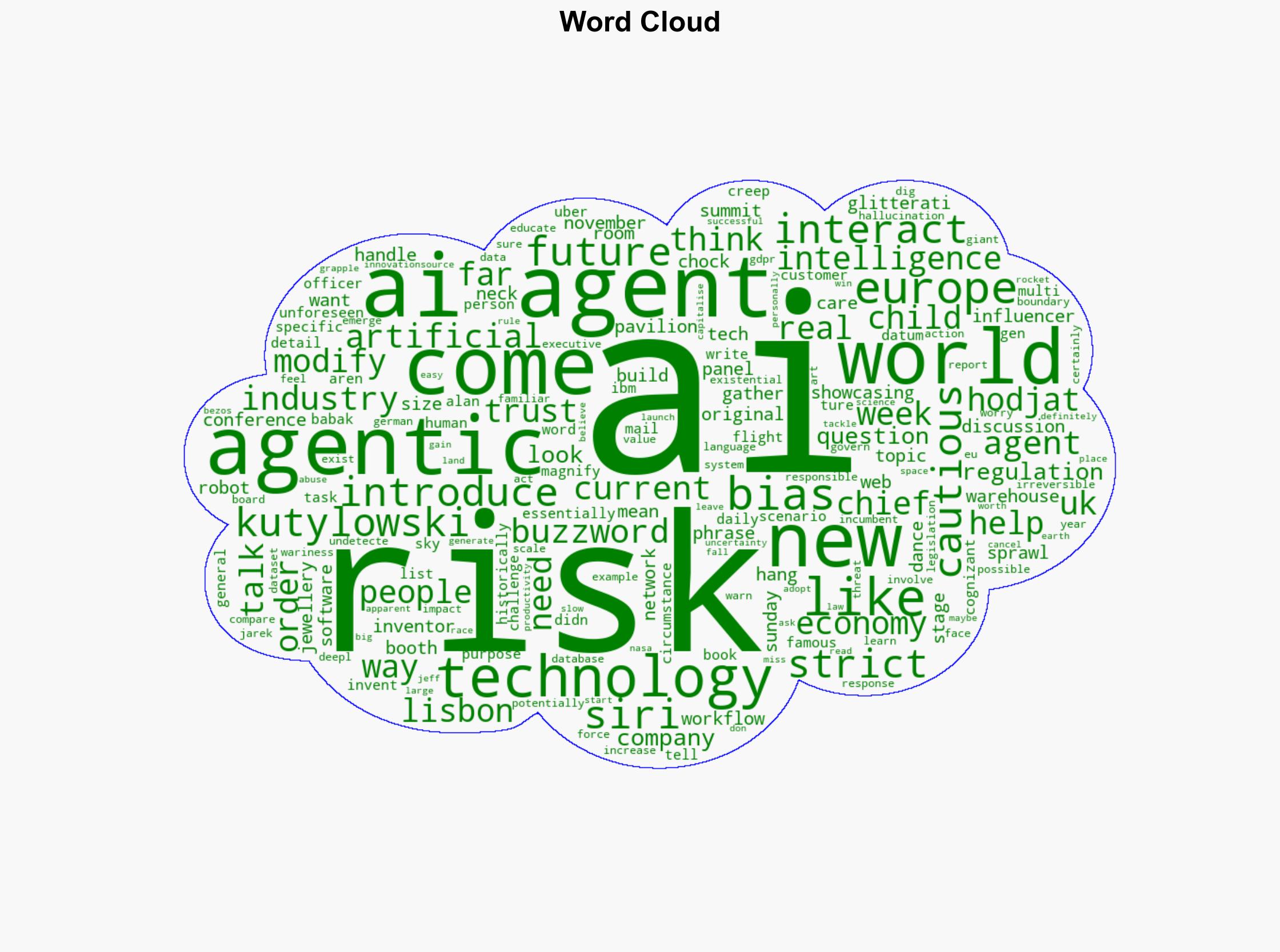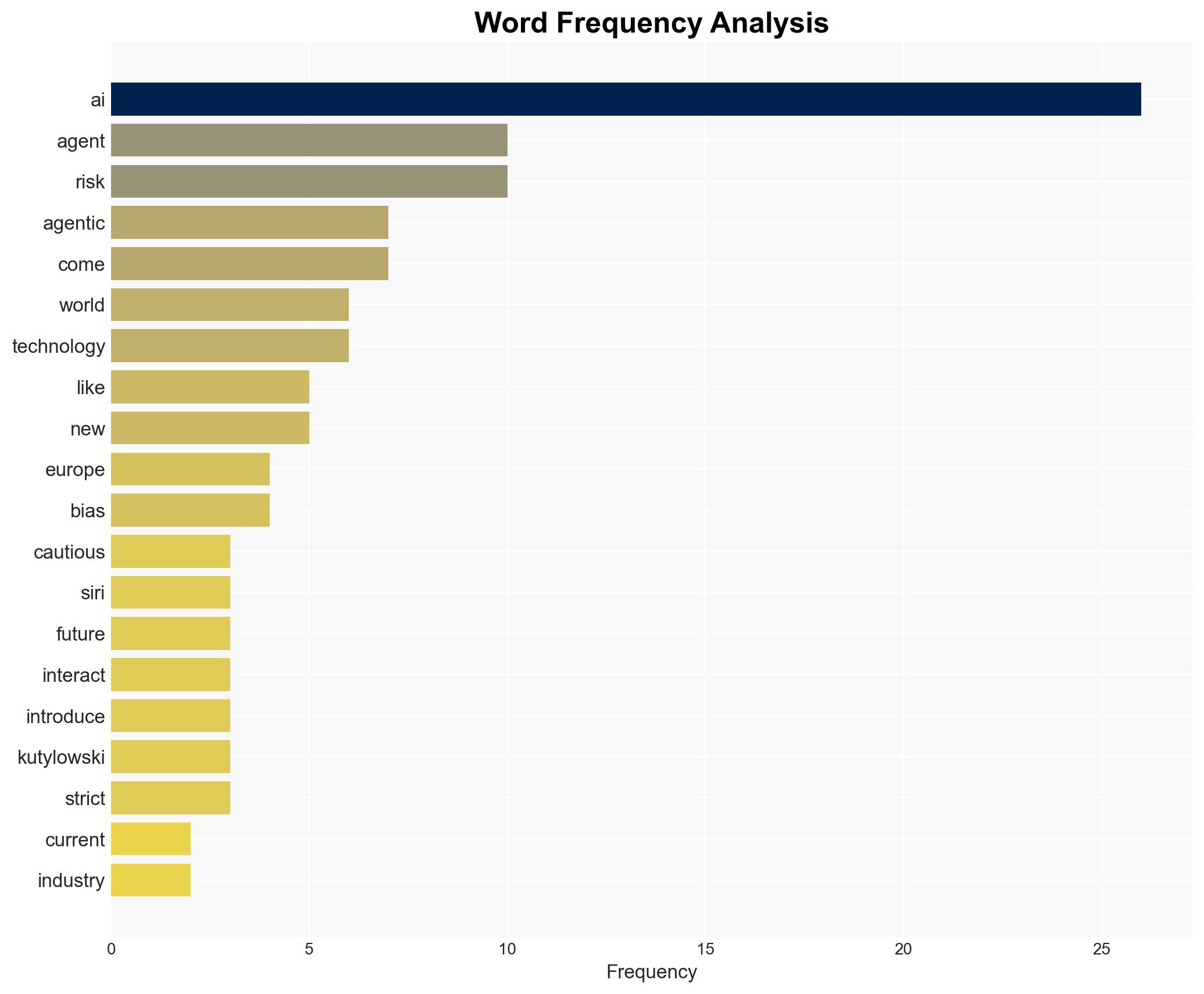Are we becoming too cautious around AI – Sky.com
Published on: 2025-11-16
AI-powered OSINT brief from verified open sources. Automated NLP signal extraction with human verification. See our Methodology and Why WorldWideWatchers.
Intelligence Report:
1. BLUF (Bottom Line Up Front)
The strategic judgment is that the current cautious approach towards AI in Europe, driven by regulatory frameworks like the EU AI Act, is likely to hinder innovation and economic competitiveness. The most supported hypothesis is that excessive caution will lead to Europe falling behind in the global AI race. Confidence level: Moderate. Recommended action: Balance regulation with innovation incentives to ensure competitiveness while managing risks.
2. Competing Hypotheses
Hypothesis 1: Excessive caution and regulation around AI in Europe will stifle innovation and economic growth, causing Europe to lag in the global AI race.
Hypothesis 2: A cautious approach with strict regulation will prevent potential risks associated with AI, such as data bias and misuse, thereby ensuring long-term sustainable development.
Hypothesis 1 is more likely due to historical precedence where over-regulation has led to slower technological adoption and economic growth. However, Hypothesis 2 cannot be dismissed as it aligns with risk management priorities.
3. Key Assumptions and Red Flags
Assumptions include the belief that regulation inherently slows innovation and that AI risks can be effectively managed without stifling growth. Red flags include potential bias in the interpretation of AI risks and the assumption that current regulations will remain static. Deception indicators could involve overstating AI risks to justify stringent regulations.
4. Implications and Strategic Risks
The primary implication is economic: Europe may lose its competitive edge in AI technology, impacting its position in the global market. Politically, this could lead to increased dependency on non-European AI solutions. Cyber risks include potential vulnerabilities in AI systems due to lack of innovation. Economically, the opportunity cost of not capitalizing on AI advancements could be significant.
5. Recommendations and Outlook
- Encourage a balanced regulatory approach that promotes innovation while managing risks.
- Invest in AI education and infrastructure to support sustainable growth.
- Best-case scenario: Europe achieves a regulatory framework that fosters innovation and risk management.
- Worst-case scenario: Over-regulation leads to economic stagnation and loss of technological leadership.
- Most-likely scenario: A gradual adjustment of regulations to better align with innovation needs.
6. Key Individuals and Entities
Babak Hodjat, Chief AI Officer at Cognizant; Jarek Kutylowski, Chief Executive of DeepL.
7. Thematic Tags
Cybersecurity, AI Regulation, Economic Competitiveness
Structured Analytic Techniques Applied
- Adversarial Threat Simulation: Model and simulate actions of cyber adversaries to anticipate vulnerabilities and improve resilience.
- Indicators Development: Detect and monitor behavioral or technical anomalies across systems for early threat detection.
- Bayesian Scenario Modeling: Forecast futures under uncertainty via probabilistic logic.
- Cognitive Bias Stress Test: Structured challenge to expose and correct biases.
- Network Influence Mapping: Map influence relationships to assess actor impact.
- Narrative Pattern Analysis: Deconstruct and track propaganda or influence narratives.
Explore more:
Cybersecurity Briefs ·
Daily Summary ·
Support us
·





